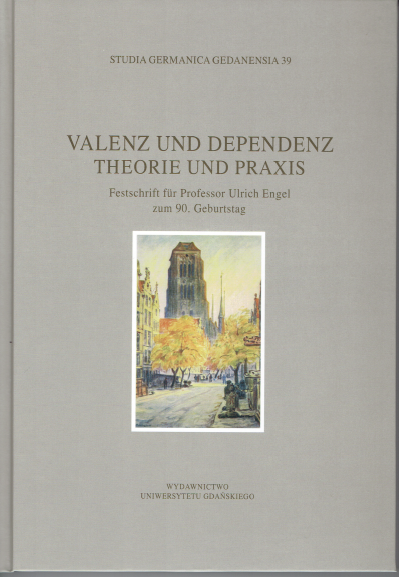Valenzdiversifikationen: Was ist Thetikvalenz?
DOI:
https://doi.org/10.26881/sgg.2018.39.05Słowa kluczowe:
thetisch, kategorisch, Suvbjekt‑VP‑Inkorporation, Konstruktionsvalenz, Saztzdiskursbindung, japanisch ‑ga/‑waAbstrakt
Thetische Satze inkorporieren zum Unterschied von kategorischen Satzen alle Argumente in VP, sehen also kein Vorfeld fur anaphorisch‑thematische DPs und insbesondere Subjekte uber der ersten Verbklammer (Comp) vor. Es wird den Vorstellungen von Kuroda nachgegangen, der meint, dass Thetik und Kategorik im Japanischen direkt und unmissverstandlich durch die Kasussuffixe ‑ga bzw. ‑wa angezeigt werden. Nach solchen Vorstellungen zeigt das Deutsche, das ja diskursgebundene Satze nicht direkt morphologisch von diskursungebundenen Satzen unterscheidet, keine direkten Entsprechungen zur ga‑wa‑Syntax und entsprechend nicht zur Thetik‑Kategorialitatsunterscheidung. Gehen wir aber davon aus, dass reine VP‑Satze im Deutschen ein Verstandnis von Konstruktionsvalenz abbilden, d.h. wenn sich von Thetikvalenz (Nullvalenz bei voller Satzsyntax) gegen kanonische Kategorikvalenz sprechen lasst, dann geraten andere Satzbegriffe in seinen Bannkreis einer solchen Konstruktionsvalenz. Diesen Konstruktionstypen geht der folgende Artikel nach.
Downloads
Pobrania
Opublikowane
Jak cytować
Numer
Dział
Licencja
Copyright by Instytut Filologii Germańskiej, Wydawnictwo Uniwersytetu Gdańskiego.

 Uniwersyteckie Czasopisma Naukowe
Uniwersyteckie Czasopisma Naukowe




